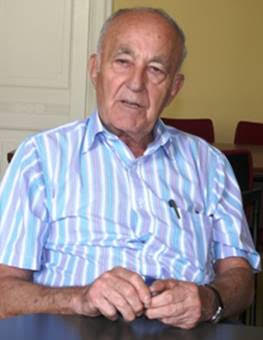
THE VOICE OF INTERNATIONAL LITHUANIA
|
VilNews has its own Google archive! Type a word in the above search box to find any article.
You can also follow us on Facebook. We have two different pages. Click to open and join.
|
Front page
The tragic story of how one third of Lithuania’s population became victims of Soviet terror
- Posted by - (0) Comment
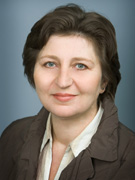
Dalia Kuodyte.
This article is based on a speech manuscript by Dalia Kuodyte, Member of the Parliament, former Director General of the Centre of Genocide and Resistance (LGGRTC).
“In the trains’ cattle cars the passengers were hardly given any food except from a little water and some inedible soup. There was scarcely any air to breathe as everyone was jammed together and the cars had only a few small windows covered with bars. A hole in the floor served as a toilet. Some of the people, especially the infants became sick immediately and died. The bodies of those who died on the journey were left on the side of the tracks.”
The string of tragedies began in August 1939, when Hitler and Stalin concluded a cynical agreement that divided up Central Europe between the two totalitarian countries. According to the Molotov-Ribbentrop pact, Lithuania was to fall into the Soviet zone of influence.
After the outbreak of the Second World War, Lithuania was occupied three times: first by the USSR in 1940, then by Nazi Germany in 1941, and finally by the USSR again in 1944.
Pre-war Lithuania’s position of neutrality on the eve of WWII did not protect the country from its sad fate. According to Lithuanian state institutions, the damage caused by the USSR‘s occupation to the Republic of Lithuania in financial terms is $278 billion. During Nazi and Soviet occupations, including 200,000 Holocaust victims, the losses of the population of Lithuania amounted to 33 percent of the total number of the country's population in 1940. Lithuania lost 1 million people to deportations, executions, incarceration, the murder of the political opposition and forced emigration.
The total number of persons registered as “anti-Soviet elements” reached 320,000 entries. There were teachers and professors, school and college students, farmers, industry workers and craftsmen among them.
- Bookmark :
- Digg
- del.icio.us
- Stumbleupon
- Redit it
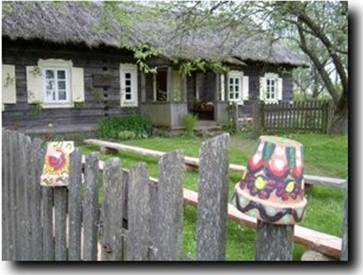
The farm where my wife’s great-grandfather lived
before the deportation to Siberia.
By Aage Myhre, Editor-in-Chief
Egle, my wife, comes into my study here in Vilnius as I am preparing the articles about the deportations to Siberia. "You should tell the story of my great-grandfather," she says. Because she, like almost all other families in Lithuania had relatives who were sent to Siberia. Many never returned, as was the case with her great-grandfather.
"Before the war, he lived and worked in the U.S.," Egle explains, "there he was exposed to an accident where he lost one leg. He therefore came back to Lithuania during the interwar years. When the war came, he had unfortunately also lost his wife and son, so he lived on the family farm with his daughter in law and his grandchildren."
"Suddenly, one day, men from the NKVD, Stalin’s gruesome special unit, came to the farm. My great-grandfather’s daughter in law managed to escape, hiding in the woods by the house. She thought they would not send an old, one-legged man and small children to Siberia. But she was wrong...
The agents threw the youngest daughter to the dog house, leaving her to what could have led to a merciless starvation and certain death, whereas the two other children and my great-grandfather were brought to the waiting truck. When she saw this, she also ran to the truck and thus became one of the many who were deported.
“On the train, already deep into Siberia, my great-grandfather died,” Egle tells with tears in her eyes."Fortunately, the train made a short stop, long enough for the daughter in law and her two children to bury him there, next to the railroad track. The three were years later all able to return to Lithuania from their Siberia-stay, but could not forget my great-grandfather's sad fate, so some years later they returned to Siberia to try to find his grave. They succeeded, incredible enough, to find the place where they had put him, at the railway track. They dug up the remains, put the bones into plastic bags, then into a large suitcase and flew home to Lithuania - with my great-grandfather in the suitcase. Here in Lithuania his remains were buried in accordance with good Catholic customs.
“My great-grandfather had finally come home."
- Bookmark :
- Digg
- del.icio.us
- Stumbleupon
- Redit it
- Posted by - (0) Comment

This a Christmas video my daughter Cassandra (14) and I have made together.
We recommend full screen…
- Bookmark :
- Digg
- del.icio.us
- Stumbleupon
- Redit it
- Posted by - (0) Comment
CHRISTMAS IN SIBERIA
A story about a Lithuanian family deported to the Lena River delta.
North Siberia, year 1942
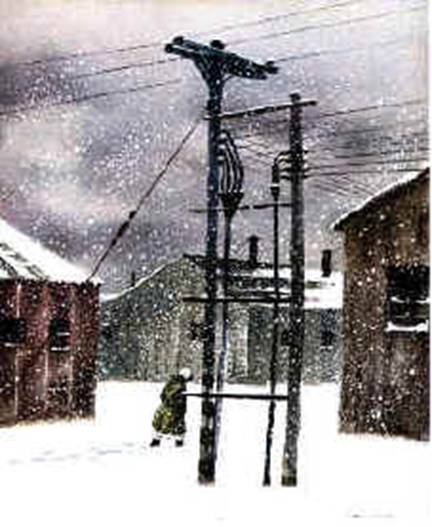
Text: Leona T. Gustaff
“The tents were freezing cold, harsh, and distressing; so, the adults decided to build better living conditions. "We can build barracks," said one Lithuanian, "We can catch the logs in the Lena River." The men waded barefoot into the icy water, caught floating logs, brought them to shore, and built the barracks. They covered the outside walls with snow and ice which they learned would help keep out the frigid temperature. They also found a large iron stove, which they placed in the middle of the building.”
- Bookmark :
- Digg
- del.icio.us
- Stumbleupon
- Redit it
A sad 70th anniversary
- Posted by - (0) Comment
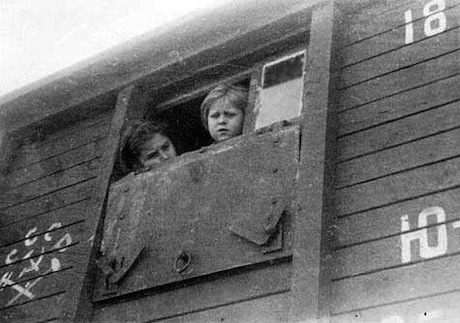
In June 1941, the first massive arrest and deportation of the Lithuanian population was perpetrated. A cargo of 17.500 people were crammed into cattle cars. Moscow’s instruction often required separation of men from their families: some 4.000 men were separated and transported to concentration camps in the Krasnoyarsk territory while 13.500 women, children and elderly people were transported mostly to Kazakhstan, the Altai Mountains territory, Russia’s republic of Komi, the Tomsk region, and the Arctic zone.
- Bookmark :
- Digg
- del.icio.us
- Stumbleupon
- Redit it
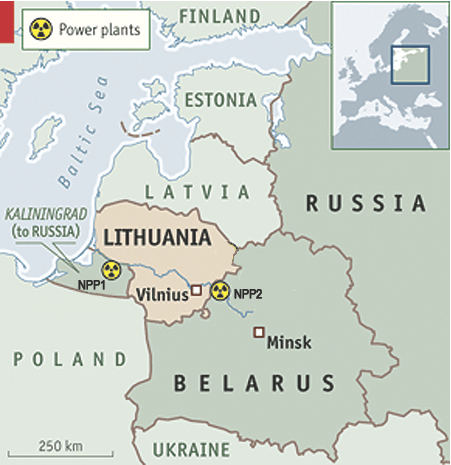
Kaliningrad and Belarus nuclear power plants. (NPP1 and 2)
on the border of Lithuania.
Prepared by:
Dr. Stan (Stasys) Backaitis, P.E., SAE Fellow1
Lithuanian American Council
One NPP containing two reactors, will be situated in Astravets, Belarus, approximately 20 km (12 miles) east of Lithuania and about 50 km (31 miles) from its capital city of Vilnius. The other set of two reactors will be constructed in the Kaliningrad enclave approximately 10 km (6 miles) south and west of Lithuania’s border. (The Kaliningrad enclave is a small patch of Russian-administered land wedged between the European Union nations of Poland and Lithuania.) In case of a nuclear disaster, the two NPPs pose a grave danger to Lithuania and other North-European countries.

Zones of nuclear endangerment by the Kaliningrad nuclear power plant.
- Bookmark :
- Digg
- del.icio.us
- Stumbleupon
- Redit it
- Posted by - (0) Comment

CHRISTMAS IN LITHUANIA
It‘s the most wonderful
time of the year...

Twelve different dishes are served on the table because Jesus had twelve apostles. All the dishes are strictly meatless: fish, herring, slizikai with poppy seed milk, kisielius (cranberry pudding), a dried fruit soup or compote, a salad of winter and dried vegetables, mushrooms, boiled or baked potatoes, sauerkraut (cooked, of course, without meat) and bread. Gero apetito! Skanaus!
Photo from: http://www.thebluegrassspecial.com
Text: Saulene Valskyte
Christmas is probably the most important celebration in the whole Christian world, but Lithuanian Christmas traditions are outstanding, even in this context. Lithuania has a very rich history and the many historical events have influenced our traditions – starting with hints of paganism, followed up by remains from the Soviet occupation, and finishing up with an intervention of the modern world. In this article I will tell you a little bit about our Christmas traditions – how they should be and what are still very much are also today. Gero apetito! Skanaus! Linksmu Kalėdų!
- Bookmark :
- Digg
- del.icio.us
- Stumbleupon
- Redit it
Lithuanian Christmas story from 1960
- Posted by - (0) Comment
http://www.youtube.com/watch?v=cRE36VrVHMI
A must see, Outstanding story in Lithuanian from the 1950's and 1960's of How Santa Claus found out about Summer and the little children invited him to return and see what Summer is like. Excellent video. Outstanding graphics. Please keep in mind that there are two parts.
- Bookmark :
- Digg
- del.icio.us
- Stumbleupon
- Redit it
- Posted by - (0) Comment
OPENED TODAY, FRIDAY 16 DECEMBER 2011
First Jewish library in
Lithuania since WWII

“Failure is impossible,” is the title of the book that was held by Lithuania’s Minister of Culture, Arūnas Gelūnas (left), at the opening of the Vilnius Jewish Public Library Friday 16 December. Wyman Brent, the Californian book collector behind the amazing collection of more than 5.000 books, plus videos and CDs, says today is one of the happiest days in his life.
Photos: Aage Myhre.
Friday 16 December 2011 the new Vilnius Jewish Public Library, located at Gedimino Avenue 24, 2nd floor, in Vilnius was officially opened. Guests from USA, Israel, European Parliament, Seimas (Lithuania’s parliament) of the Republic of Lithuania, Government of the Republic of Lithuania, Lithuanian Ministry of Culture, Lithuanian Ministry of Foreign Affairs and others were participating.
On Saturday 17 December 2011, from 11:00 to 17:00 the library will be open to the general public, giving everyone an opportunity to view the premises, the collection of books and photographs, the exhibits, and a presentation of a slide-show giving a retrospective of the establishment of the library. Visitors will be greeted and will have the opportunity to speak with the initiators of the library.
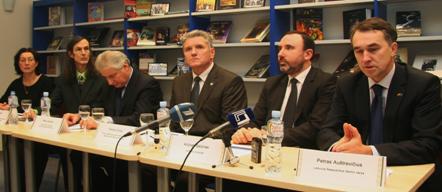
Panel at the press conference (l/r): Davia Kiminaite, Wyman Brent,
Miša Jakobas, Petras Zurlys, Arūnas Gelūnas and Petras Austrevičius.
 Daiva Kiminaite is now Head of the Vilnius Jewish Public Library |
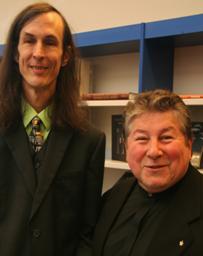 The composer Anatolijus Šenderovas with Wyman Brent. |

Žilvinas Beliauskas (left) and Petras Zurlys have both done a great job
for the realization of the library.
Read also:
The California Baptist who collected 5000 Jewish books and brought them all to Lithuania
- Bookmark :
- Digg
- del.icio.us
- Stumbleupon
- Redit it
- Posted by - (0) Comment
Memory of the Vilnius
sound that once was
"The Eternal Question” / “DI ALTE KASHE”
FRAIDY KATZ sings Yiddish
Produced by Wolf Krakowski and Jim Armenti
The Eternal Question
Top Ten Records of the Year
One World Radio
WHUS, UConnecticut@Storrs
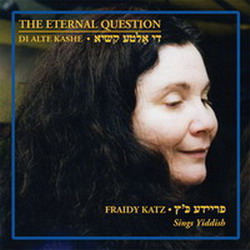
Rated 4.5 stars, George Robinson, Jewish Week, Read Review
- Bookmark :
- Digg
- del.icio.us
- Stumbleupon
- Redit it
- Posted by - (0) Comment
‘Day and Night’ is an epoch-making play for modern Lithuania
O P I N I O N / R E V I E W by Birutė Ušinskaitė
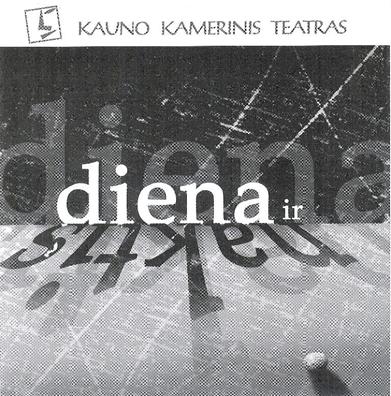
Cover of playbill
It was just another rainy, temperate evening in early December of the year 2011, but the play I was privileged to see at the Kaunas Chamber Theater, Day and Night, proved to me, a proud woman of Vilnius, that not all that is bold and brilliant here comes from our capital.
- Bookmark :
- Digg
- del.icio.us
- Stumbleupon
- Redit it
- Posted by - (0) Comment
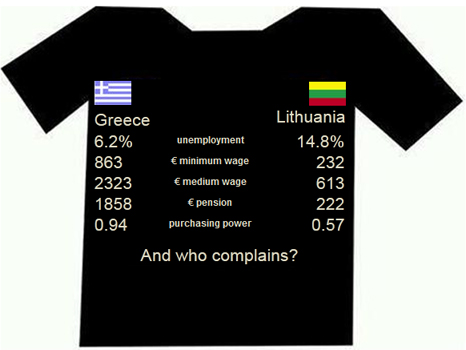
- Bookmark :
- Digg
- del.icio.us
- Stumbleupon
- Redit it
- Posted by - (0) Comment
“Reconstructing our Lithuanian family”
at the Lithuanian Embassy in the U.S.
First joint Hanukkah –
Lithuanian Kucios Party
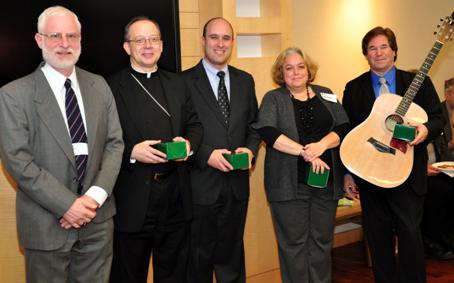
One bishop, four rabbis.
On Sunday December 11 at 2 pm, four Rabbis, a Bishop and members of the local Jewish and Lithuanian communities celebrated together at the first annual joint Hanukkah and Lithuanian Kucios Party at the Embassy of the Republic of Lithuania in the U.S.. The joint party was hosted by The Jewish Lithuanian Heritage Project and The Lithuanian-American Community of D.C. at the invitation of His Excellency Ambassador Zygimantas Pavilionis. The celebration is part of The Sunflower Project, an international effort to bridge the Jewish and Lithuanian communities through open dialogue, youth exchanges and shared cultural events.
- Bookmark :
- Digg
- del.icio.us
- Stumbleupon
- Redit it
Graves matter to Litvaks
- Posted by - (0) Comment
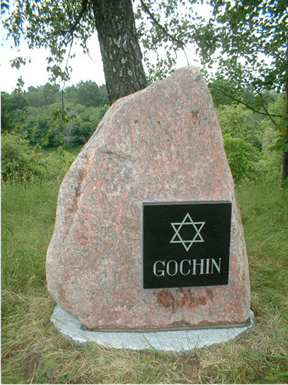
In Janjelgava in Latvia, I found the grave of my Great-Grandfather, it was shattered into thousands of pieces, today it appears in its original state after a complete re-build and restoration to what it would have been when my Grandmother and her siblings would have had it constructed.
Author: Grant Arthur Gochin, Los Angeles, California, USA.
I document my family to the 1700’s in Papile, Akmene District in Lithuania. Jews have lived in Lithuania around 700 years, it is possible that my family has been Lithuanian since the 1300’s. A prerequisite for any Jewish settlement is that a cemetery be built to bury the dead, and so, after 700 years, Lithuania holds many hundreds of Jewish cemeteries, and in all likelihood, there are thousands that had the name Gochin that were buried in the vicinity of Papile.
A religious requirement and a community requirement of Jews is that they maintain and honor the cemeteries of their ancestors, and so, throughout the world where Jews live, one can see clean and neat cemeteries where descendants honor their ancestors. This is very similar to the Lithuanian tradition of All Souls Day where families visit and honor, and remember the graves of their ancestors.
- Bookmark :
- Digg
- del.icio.us
- Stumbleupon
- Redit it
- Posted by - (0) Comment
MACEVA - מצבה
http://www.litvak-cemetery.info/

MACEVA (מצבה Matseyva in Hebrew) - In Hebrew language means 'gravestone'. 'MACEVA' is a non-profit organization, which aims to preserve signs of old Jewish cemeteries, for the future generations in Lithuania and the diaspora.
- Bookmark :
- Digg
- del.icio.us
- Stumbleupon
- Redit it
- Posted by - (0) Comment
A LETTER FROM MASHA KAMENETSKAYA, ONE OF MANY
PROTESTERS IN ST. PETERSBURG, RUSSIA, LAST SATURDAY
When you feel that you have done the right thing in the right place
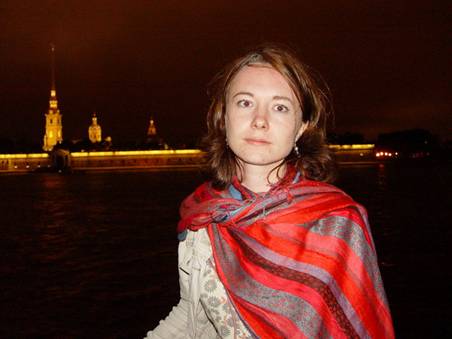
This is a letter from Masha Kamenetskaya, a young journalist and writer from St. Petersburg, Russia. She is describing her participation in the evening after the 10 December protest for fair elections in the city on the Neva.
SATURDAY 10 DECEMBER 2011: Finally I am home -- after a good and such a... real day. Even a romantic one, in some sense, when you feel that you have done the right thing in the right place.
I spent the day with my friends and loved ones -- who would have thought that a meeting of protest can be such a great occasion to see friends and to catch up with them? And I spent the day with the people living in the same city as I do. The people who smiled and who cared.
The day started with snow (in which some people saw the symbolic connection with the symbolic “against the war” white ribbons and white flowers worn and carried by the meeting participants), continued with lunar eclipse (have you heard of it? it took place an hour before the meeting in question on Pionerskaya Square), reached its pinnacle in the square itself, and ended with me at the theatre.
You want to know about the meeting, of course. While we were walking there, I saw quite a few people, those who supported one of the peaceful ideas for the meeting and who carried white carnations; police women jumping out of their cars like snowflakes; old-aged people, accompanied by their grandchildren -- all headed there. And I saw hundreds and hundreds of others, too. .A helicopter was spinning above the Kazan cathedral. OMON [special security forces -- auth] trucks were "hidden" from view just around the corner. There were also internal-security military vehicles there, too, with, probably, lots of soldiers inside -- but over the course of the day, we never once saw any Army soldiers.
- Bookmark :
- Digg
- del.icio.us
- Stumbleupon
- Redit it
VilNews e-magazine is published in Vilnius, Lithuania. Editor-in-Chief: Mr. Aage Myhre. Inquires to the editors: editor@VilNews.com.
Code of Ethics: See Section 2 – about VilNews. VilNews is not responsible for content on external links/web pages.
HOW TO ADVERTISE IN VILNEWS.
All content is copyrighted © 2011. UAB ‘VilNews’.

 Click on the buttons to open and read each of VilNews' 18 sub-sections
Click on the buttons to open and read each of VilNews' 18 sub-sections 






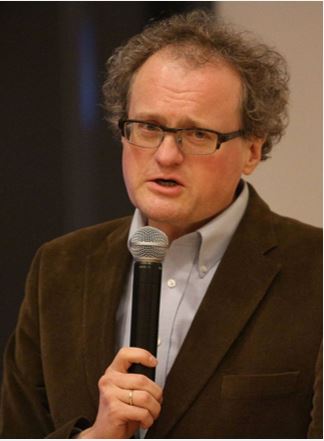

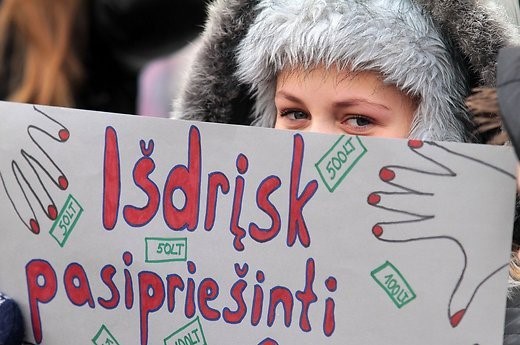


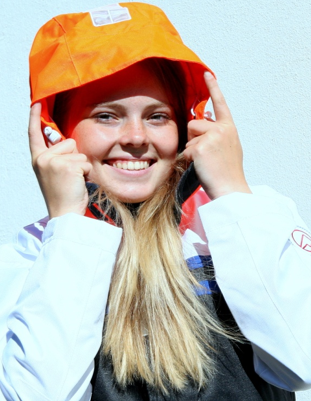
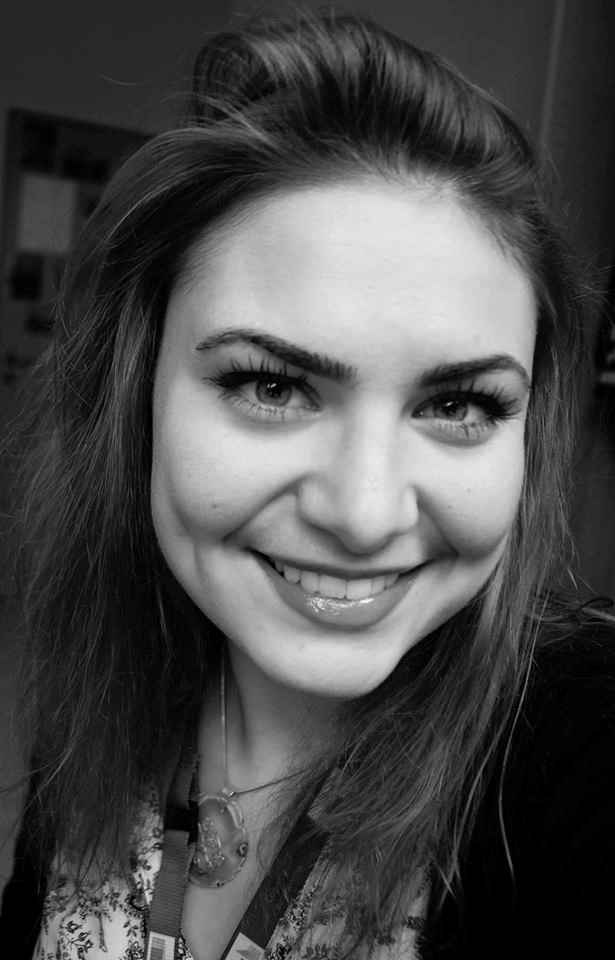

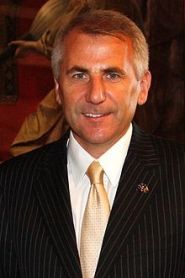
.jpg)
